IL4 receptor ILR4α regulates metastatic colonization by mammary tumors through multiple signaling pathways
- PMID: 24947041
- PMCID: PMC4134711
- DOI: 10.1158/0008-5472.CAN-14-0093
IL4 receptor ILR4α regulates metastatic colonization by mammary tumors through multiple signaling pathways
Abstract
IL4, a cytokine produced mainly by immune cells, may promote the growth of epithelial tumors by mediating increased proliferation and survival. Here, we show that the type II IL4 receptor (IL4R) is expressed and activated in human breast cancer and mouse models of breast cancer. In metastatic mouse breast cancer cells, RNAi-mediated silencing of IL4Rα, a component of the IL4R, was sufficient to attenuate growth at metastatic sites. Similar results were obtained with control tumor cells in IL4-deficient mice. Decreased metastatic capacity of IL4Rα "knockdown" cells was attributed, in part, to reductions in proliferation and survival of breast cancer cells. In addition, we observed an overall increase in immune infiltrates within IL4Rα knockdown tumors, indicating that enhanced clearance of knockdown tumor cells could also contribute to the reduction in knockdown tumor size. Pharmacologic investigations suggested that IL4-induced cancer cell colonization was mediated, in part, by activation of Erk1/2, Akt, and mTOR. Reduced levels of pAkt and pErk1/2 in IL4Rα knockdown tumor metastases were associated with limited outgrowth, supporting roles for Akt and Erk activation in mediating the tumor-promoting effects of IL4Rα. Collectively, our results offer a preclinical proof-of-concept for targeting IL4/IL4Rα signaling as a therapeutic strategy to limit breast cancer metastasis.
©2014 American Association for Cancer Research.
Conflict of interest statement
No conflicts of interest to declare.
Figures

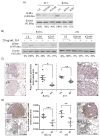

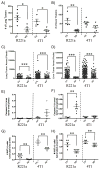
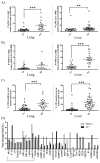
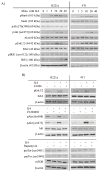
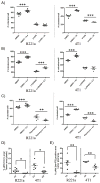
References
-
- American Cancer Society. Cancer Facts & Figures 2013. Atlanta: American Cancer Society; 2013.
-
- Camp BJ, Dyhrman ST, Memoli VA, Mott LA, Barth RJ. In situ cytokine production by breast cancer tumor-infiltrating lymphocytes. Ann Surg Oncol. 1996;3:76–84. - PubMed
-
- Todaro M, Lombardo Y, Francipane MG, Alea MP, Cammareri P, Iovino F, et al. Apoptosis resistance in epithelial tumors is mediated by tumor-cell-derived interleukin-4. Cell Death Differ. 2008;15:762–72. - PubMed
-
- Nelms K, Keegan AD, Zamorano J, Ryan JJ, Paul WE. The IL-4 receptor: signaling mechanisms and biologic functions. Ann Rev Immunol. 1999;17:701–38. - PubMed
Publication types
MeSH terms
Substances
Grants and funding
LinkOut - more resources
Full Text Sources
Other Literature Sources
Medical
Molecular Biology Databases
Miscellaneous

